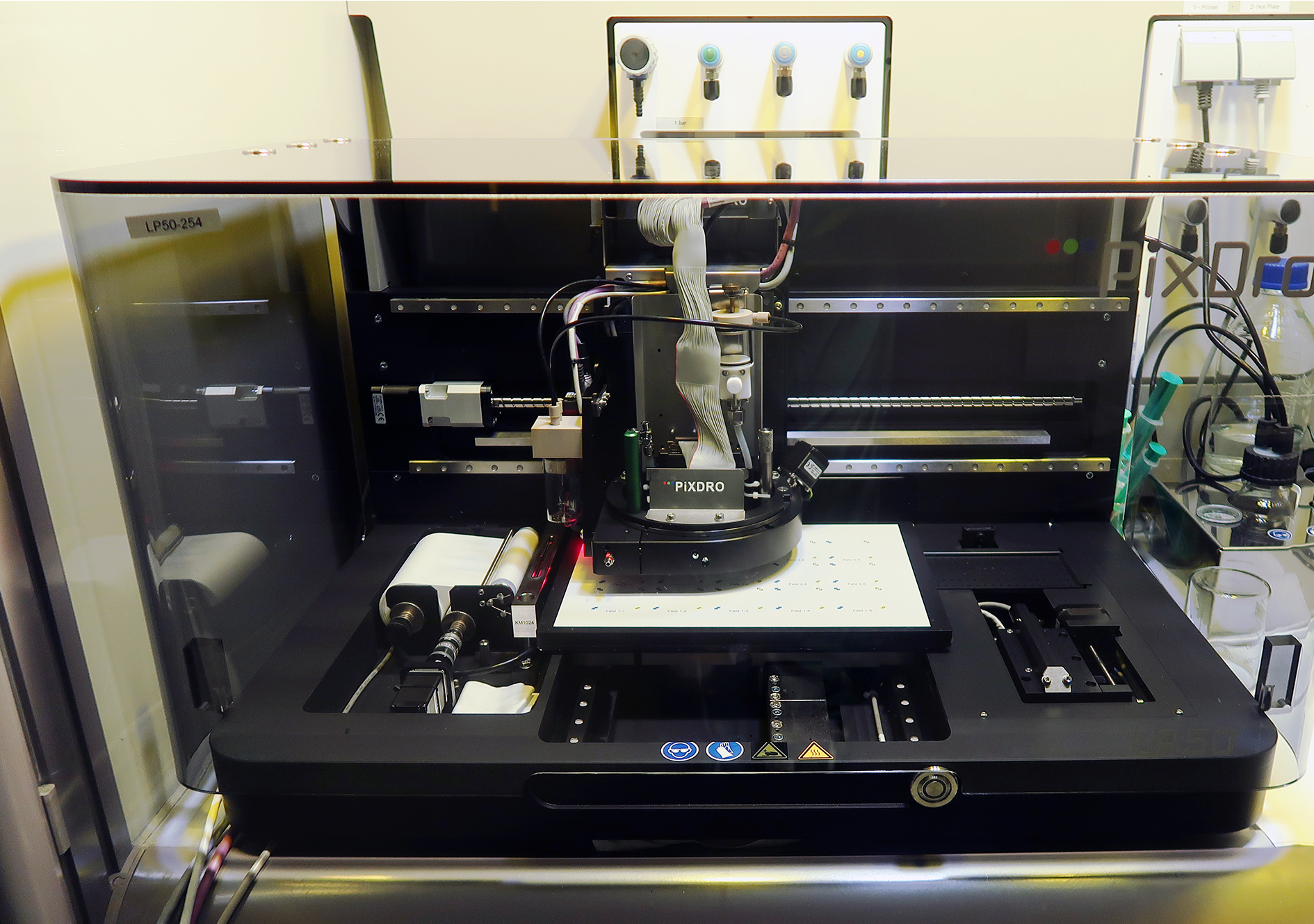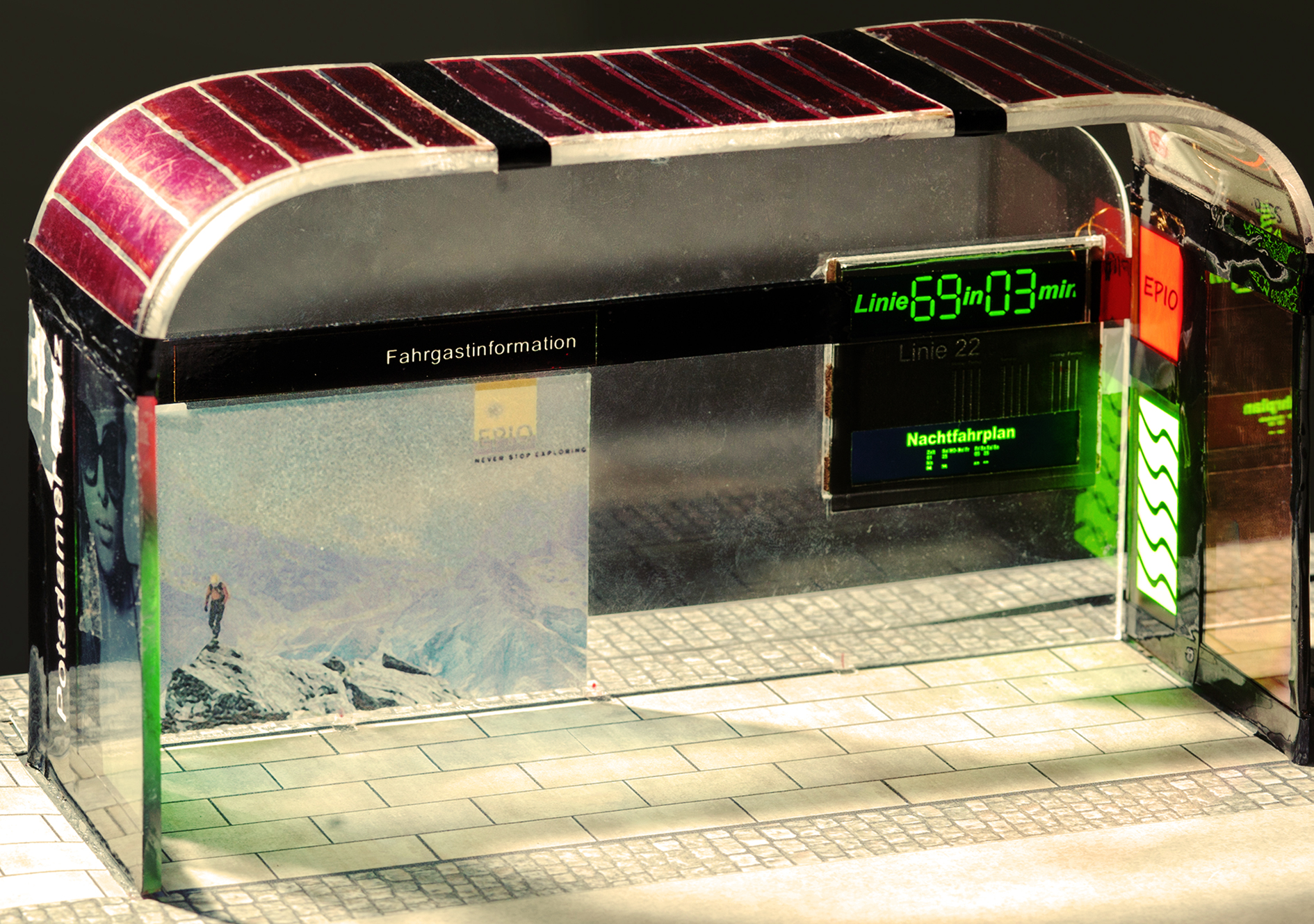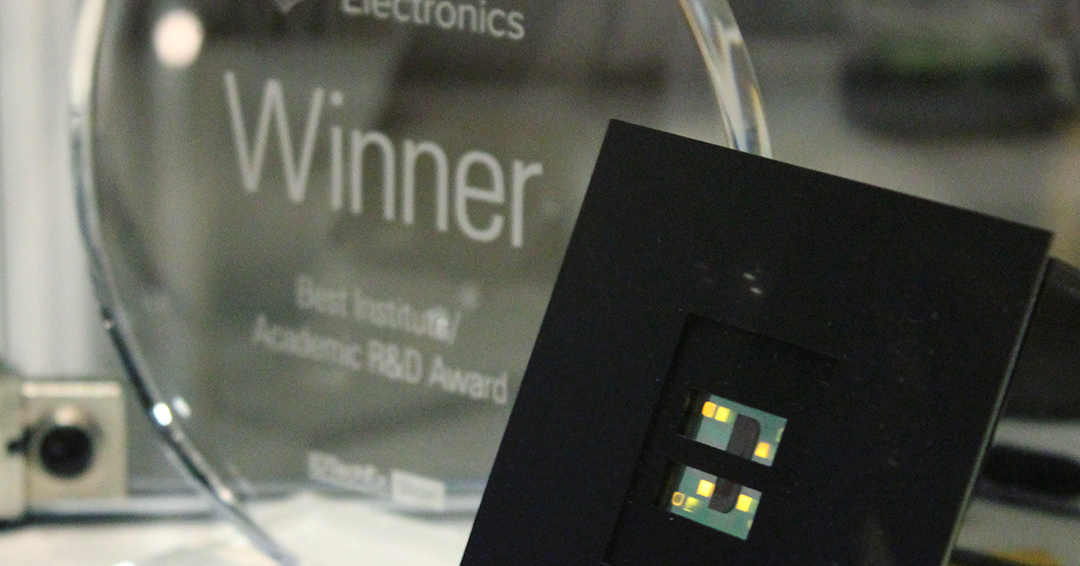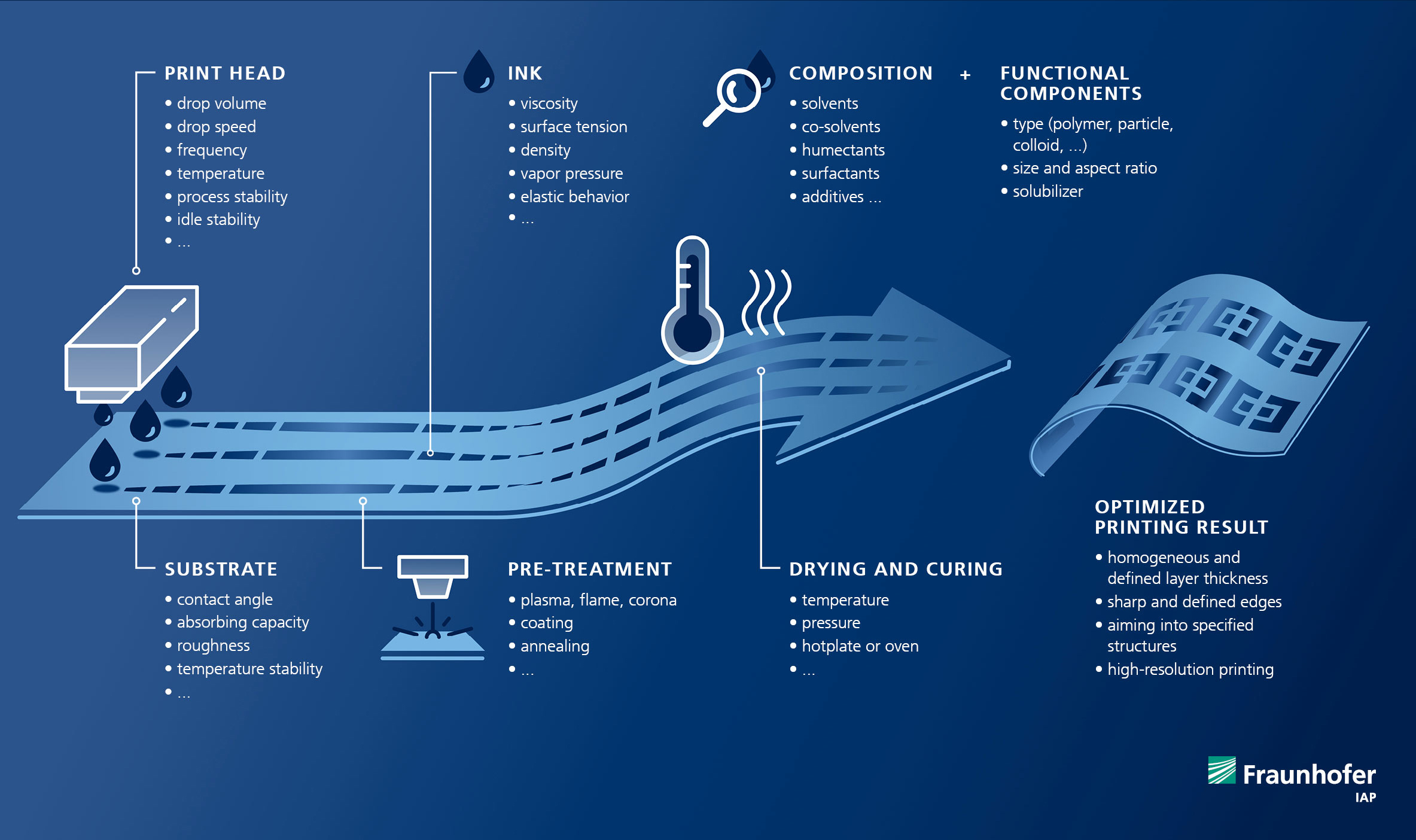Functional materials are our competence
The research area Functional Materials and Devices at Fraunhofer IAP specializes, among other things, in the solution processing of conductive and semiconductive materials for organic electronics. With years of experience, wide range material knowledge and extensive analysis capabilities, we specialize in making functional materials printable for specific applications.
We develop inks for OLEDs, quantum dots and solar cells.
We benefit from years of expertise in printed organic light-emitting diodes (OLEDs), organic solar cells (OPVs) and quantum materials (quantum dots, QDs). Optimal functionality can only be achieved if all successively printed layers in the device fit together. To this end, we make organic and inorganic materials printable or adapt the printing parameters of commercially available inks. We have a wide selection of industrially relevant print heads at our disposal. With a pilot plant, we also have the emerging technology of electrostatic printing (ESJET) or electrohydrodynamic printing (EHDJET).
We develop processes
Together with machine builders, we also offer comprehensive process development. Our consulting includes the development of process parameters and the entire production process. Technology transfer takes place on site. For OLED production, we offer complete solutions based on comprehensive expertise from the technology network GOTA - German OLED Technology Alliance.





